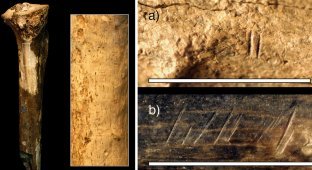Daniel Sickles' limb and its adventures (9 photos + 1 video)
One of the most popular exhibits at the National Museum of Health and Medicine in Washington, D.C., is a fragment of a leg bone belonging to an American Civil War general. The exhibit is so popular that the former owner of the leg himself has visited it many times, both to mourn his loss and to impress guests he brought with him. 
The leg was once part of Union Major General Daniel Edgar Sickles, one of the most controversial figures of the era. He was born to a middle-class New York couple. After completing his studies, he achieved good success in the legal field, and then went into politics. In 1851, at the age of 32, he provoked gossip in society by marrying Teresa Baggioli. The young wife was half his age. Being a notorious womanizer, Sickles openly entered into a relationship with a prostitute named Fanny White and took her to social events, and once, to the horror of those present, even brought a lady of easy virtue into the hall of the New York State Assembly. 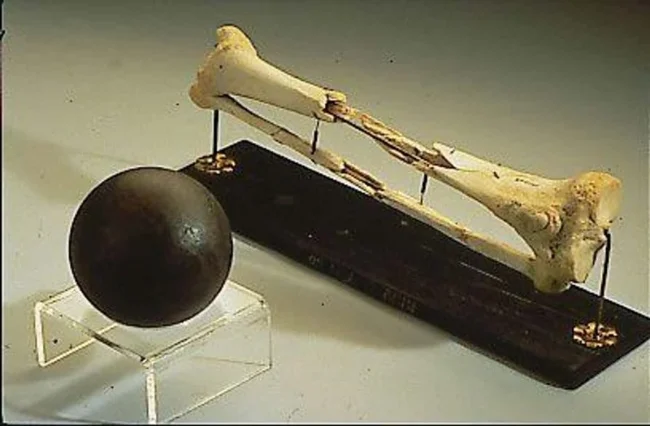
Sickles' constant love affairs and ignoring his legal wife prompted Teresa to indulge in an affair as well. The woman had an affair with Philip Barton Key, the US District Attorney. When Sickles learned of his wife's affair, he shot Key in front of everyone and practically in front of the White House. Sickles voluntarily surrendered and was arrested. But his status ensured his lenient treatment. 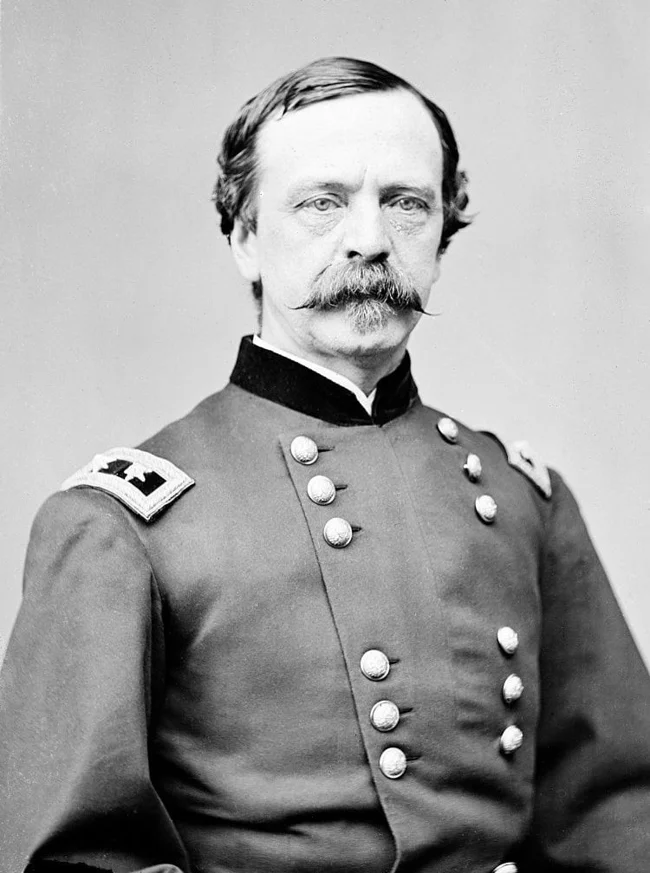
Daniel Sickles
Thus, he was allowed to leave his pistol in prison and receive numerous high-ranking guests representing the cream of the capital. 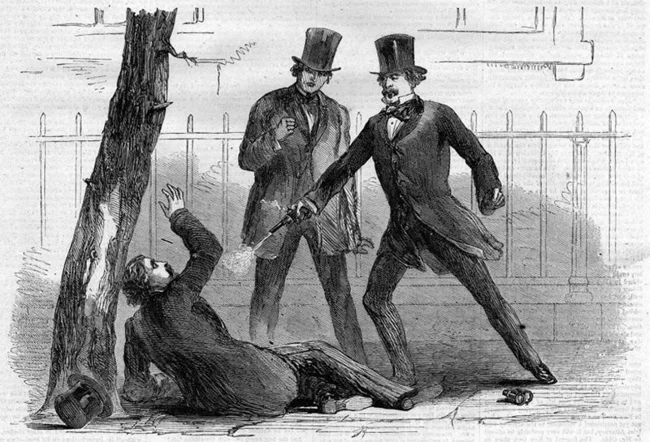
At his trial, Sickles pleaded temporary insanity, insisting that his wife's infidelity had clouded his judgment. It was the first time "temporary insanity" had been used as a defense in a court of law. But it worked. The newspapers were sympathetic to the love slave, with one declaring that "there is no doubt that the public opinion of the United States will acquit him of the murder of the man who dishonored his bed." The prediction proved correct: the killer was acquitted. 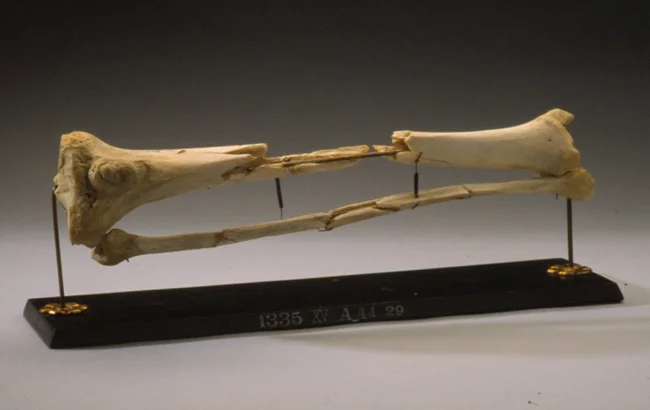
The prisoner's brush with the law did not affect his career. Instead, he was promoted and soon led the charge against the Confederates at the Battle of Gettysburg. On the second day of the battle, July 2, 1863, Major General Sickles disobeyed orders and moved his III Corps forward along the front, leaving much of the army's center open to attack. Almost all of the men were killed, and Sickles, who was on horseback, was wounded in the right leg by a cannonball. 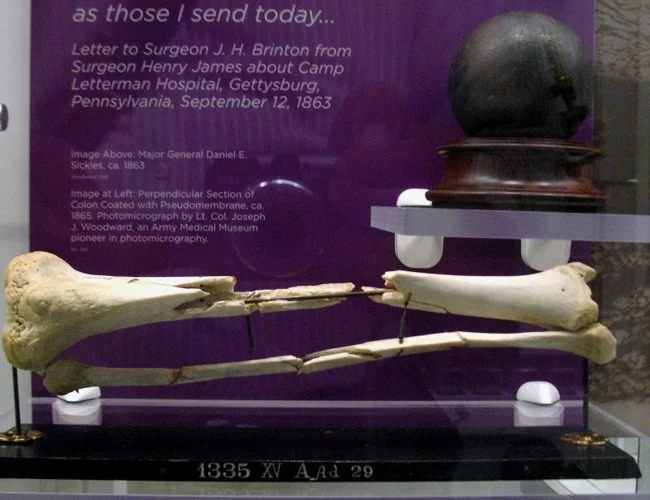
The wounded man was carried to a secluded ravine, and the Third Army Corps' chief medical officer, Thomas Sim, examined his leg. The shot had shattered the tibia and fibula, and Dr. Sim decided that the only way to save the major general's life was to amputate the limb. 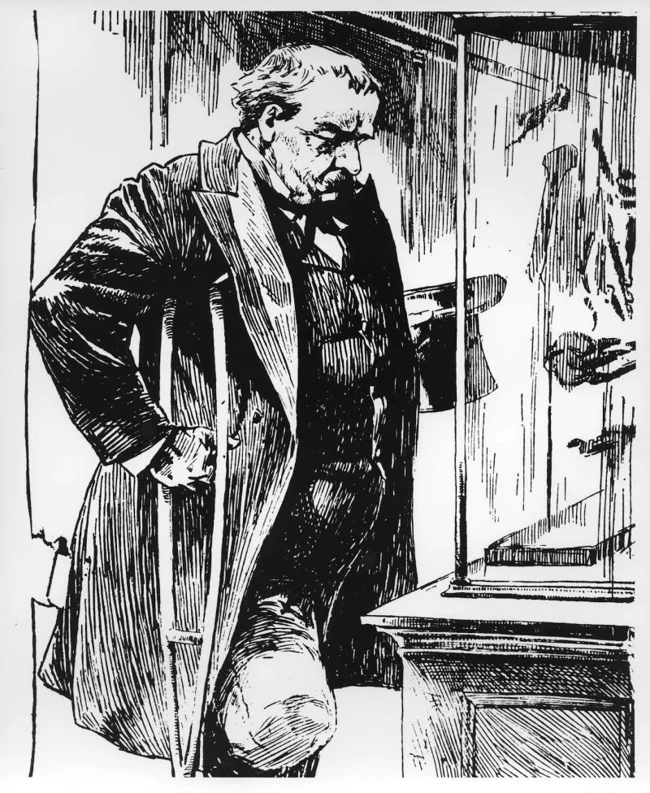
The General examines his former leg
After the amputation, Sickles had the leg donated to the Army Medical Museum (later renamed the National Museum of Health and Medicine), which had recently been founded and was seeking specimens, artifacts, and medical records relating to battlefield injuries and treatments for the study of military medicine. The former owner shipped the leg to the museum in a coffin-like box, where it was received with special care, prepared, and mounted for display. 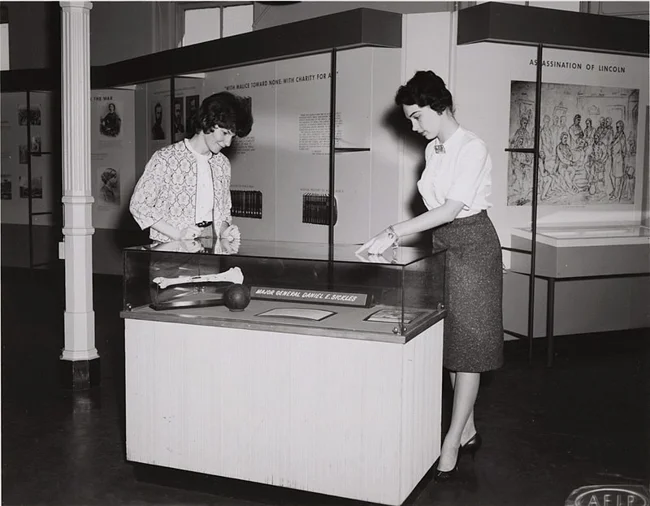
A Valuable Exhibit
Sickles visited the exhibit many times after that, sometimes inviting guests to accompany him on his visits. He once took Mark Twain with him. The writer even noted that "the general valued his lost leg more than the one he had left." Twain wrote, "I am quite sure that if he had to part with either of them, he would part with the one he has." 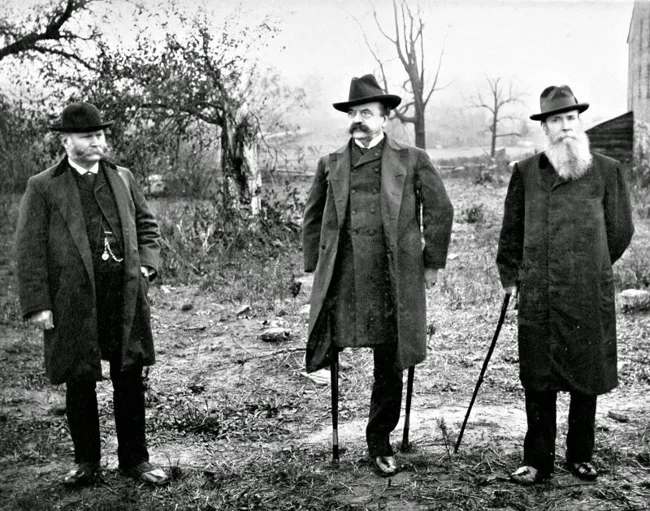
The General Revisits the Battlefield Where He Lost His Leg
Naturally, Sickles's injury ended his military career. He returned to politics. He died in 1914 at the age of 94. The leg is still on display at the National Museum of Health and Medicine.












